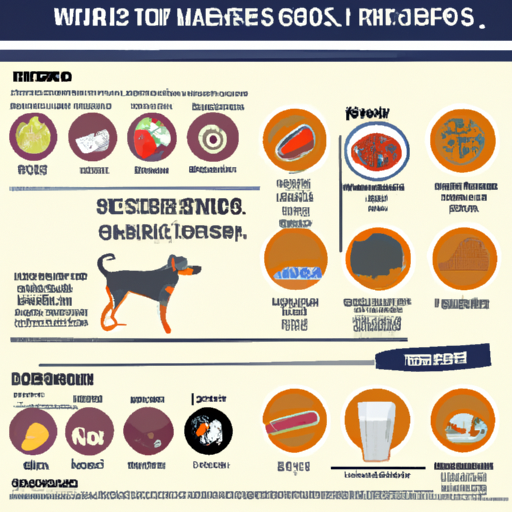“`markdown
What Dogs Can’t Eat Chart
Introduction
You, as a caring and responsible pet owner, are always looking for ways to ensure your dog’s health and happiness. However, you may not be aware of some common foods that are perfectly safe for humans but can be harmful, even fatal, to dogs. This guide will provide you with a detailed “What Dogs Can’t Eat” chart.
What Foods Are Harmful to Dogs?
Certain foods can be toxic to dogs and others can cause health issues. Here are some of the most common ones:
- Chocolate: Contains theobromine, which can cause heart problems in dogs.
- Xylitol: A common sweetener in human foods, it can cause liver failure and seizures in dogs.
- Grapes and Raisins: Can cause kidney failure in dogs.
- Onions and Garlic: Can cause anemia in dogs.
- Alcohol: Even small amounts can cause poisoning in dogs.
Below is a handy chart detailing more foods to avoid and why:
| Food | Reasons to Avoid |
|---|---|
| Chocolate | Heart problems |
| Xylitol | Liver failure |
| Grapes | Kidney failure |
| Onions | Anemia |
| Alcohol | Poisoning |
What Foods Are Good for Dogs?
While there is a long list of foods that are harmful to dogs, there are also many that are healthy. These include:
- Chicken and Turkey: Cooked, lean meats are a great source of protein for dogs.
- Fish: Especially salmon and tuna, can provide dogs with beneficial omega-3 fatty acids.
- Vegetables: Such as carrots and green beans, can be good treats for dogs.
- Fruits: Apples and bananas can be a healthy snack for dogs, but make sure to remove any seeds or pits.
FAQs
Can dogs eat peanut butter?
Yes, but make sure it doesn’t contain the sweetener xylitol, which is toxic to dogs.
Are apples safe for dogs?
Yes, but remove the seeds and core as they can be harmful.
Can dogs eat bananas?
Yes, bananas are safe for dogs but should be given in moderation due to their high sugar content.
Can dogs eat cheese?
In small quantities, cheese can be a great treat for dogs, but be mindful of the fat content.
Conclusion
Your dog’s health is highly dependent on their diet. As a caregiver, it’s crucial for you to know what is safe and what is not. This chart can be a helpful tool in keeping your pet safe and sound. Remember, when in doubt, always consult your veterinarian.
“`



